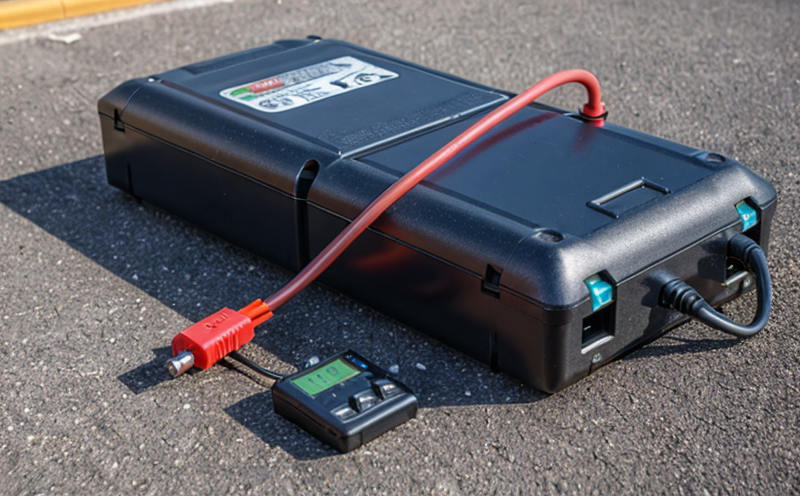Battery Safety and Compliance: A Comprehensive Guide
The use of batteries has become ubiquitous in modern life, from smartphones to electric vehicles, and their importance cannot be overstated. However, with the increasing demand for battery-powered devices, safety concerns have also grown exponentially. Battery-related fires, explosions, and injuries have made headlines worldwide, prompting a growing need for manufacturers, users, and regulatory bodies to prioritize battery safety and compliance.
Understanding Battery Safety
Battery safety is a critical aspect of ensuring public safety and preventing accidents related to electrical discharge or fire. Manufacturers must adhere to strict guidelines and regulations to ensure that their products meet the required standards for safety. Some key factors that contribute to battery safety include:
Design and construction: Batteries must be designed with safety features such as thermal runaway prevention, overcharge protection, and secure connections.
Material selection: The choice of materials used in battery production can significantly impact safety, as some materials may be more prone to overheating or flammability.
Testing and certification: Manufacturers must conduct rigorous testing and obtain certifications from recognized third-party organizations to ensure their products meet industry standards.
Battery Safety Regulations
Regulatory bodies worldwide have established guidelines for battery safety, including:
UN 38.3: The United Nations Standard for the Transport of Lithium Batteries, which sets out requirements for safe transportation and handling.
IEC 62133: The International Electrotechnical Commissions Standard for Safety Requirements for Secondary Cells and Batteries Containing Refined Lead, Nickel-Cadmium, Nickel-Metal Hydride and Small Nickel-Iron Alkaline Cells with Abraded Strips.
UL 2271: Underwriters Laboratories Standard for Battery Systems for Use in Electric Vehicles.
Battery Compliance Guidelines
To ensure compliance with regulatory guidelines, manufacturers must adhere to the following steps:
1.
Conduct thorough risk assessments: Identify potential hazards and take corrective action to mitigate risks.
2.
Design and develop safe products: Incorporate safety features, such as thermal runaway prevention and overcharge protection, into product design.
3.
Test and certify products: Conduct rigorous testing and obtain certifications from recognized third-party organizations.
4.
Maintain accurate labeling and documentation: Ensure that all products are properly labeled with relevant information, including warnings and instructions.
QA
What is the primary cause of battery-related fires and explosions?
Battery-related fires and explosions are often caused by a combination of factors, including:
Overcharging: Allowing batteries to charge beyond their maximum capacity can lead to overheating, which may ignite nearby flammable materials.
Short circuits: Physical damage or design flaws can cause internal short circuits, leading to electrical discharge and potential fires.
What are the main differences between UN 38.3 and IEC 62133?
UN 38.3 and IEC 62133 are both regulatory standards for battery safety:
UN 38.3: Focuses on the safe transportation and handling of lithium batteries, with specific requirements for packaging, labeling, and testing.
IEC 62133: Sets out general safety requirements for secondary cells and batteries containing refined lead, nickel-cadmium, nickel-metal hydride, and small nickel-iron alkaline cells.
What are the key benefits of adhering to battery safety regulations?
Adhering to regulatory guidelines can help manufacturers:
Reduce liability: By following established standards, companies can minimize their risk of being held liable for accidents or injuries related to battery use.
Enhance product reputation: Demonstrating a commitment to safety through regulatory compliance can improve brand credibility and customer trust.
What should I do if I suspect a battery is faulty?
If you suspect a battery is faulty:
1.
Do not use the battery: Immediately cease using the battery to prevent any potential hazards.
2.
Contact the manufacturer: Reach out to the manufacturer for guidance on how to handle the situation.
3.
Dispose of the battery safely: Follow local regulations and guidelines for disposing of damaged or faulty batteries.
What are some common myths about battery safety?
Some common misconceptions about battery safety include:
Myth: All lithium-ion batteries are prone to overheating.
Reality: While lithium-ion batteries can be more susceptible to thermal runaway, this is not a universal characteristic of all lithium-ion batteries.
Myth: Batteries with higher capacities are inherently safer.
Reality: Higher capacity batteries may actually pose a greater risk due to their increased energy density and potential for overheating.
Conclusion
Battery safety and compliance are critical components of ensuring public safety and preventing accidents related to electrical discharge or fire. By understanding regulatory guidelines, adhering to industry standards, and prioritizing product safety, manufacturers can minimize risks and contribute to a safer environment for consumers worldwide.

































